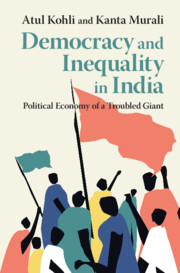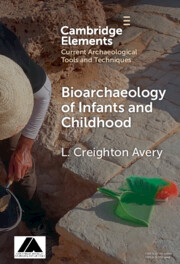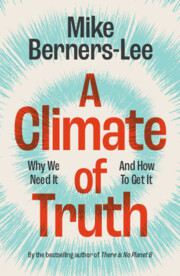Refine search
Actions for selected content:
1147 results
Introduction
-
- Book:
- Democracy and Inequality in India
- Published online:
- 11 October 2025
- Print publication:
- 30 October 2025, pp 1-12
-
- Chapter
- Export citation

Democracy and Inequality in India
- Political Economy of a Troubled Giant
-
- Published online:
- 11 October 2025
- Print publication:
- 30 October 2025
Chapter 2 - Nutrition, Growth and Vegetative Capacities
-
- Book:
- Galen on Human Physiology
- Published online:
- 28 July 2025
- Print publication:
- 02 October 2025, pp 56-87
-
- Chapter
- Export citation
On the central exponent of superalgebras with superinvolution
- Part of
-
- Journal:
- Canadian Mathematical Bulletin , First View
- Published online by Cambridge University Press:
- 22 September 2025, pp. 1-18
-
- Article
- Export citation
Chapter 3 - The Shortest Distance between Two People Is a Story
- from Part I - Storying-to-Learn: How Stories-that-Matter Help Us Appreciate Social Work in Action
-
-
- Book:
- Learning through Social Work Stories-That-Matter
- Published online:
- 28 August 2025
- Print publication:
- 11 September 2025, pp 37-45
-
- Chapter
- Export citation

Bioarchaeology of Infants and Children
-
- Published online:
- 25 August 2025
- Print publication:
- 25 September 2025
-
- Element
- Export citation
Minimum Reporting Set of nutritional intake and growth outcomes in preterm nutrition studies: A Delphi study
-
- Journal:
- Proceedings of the Nutrition Society / Volume 84 / Issue OCE2 / June 2025
- Published online by Cambridge University Press:
- 24 July 2025, E163
-
- Article
-
- You have access
- Export citation
Dietary protein, muscle and the fat-free mass within the Protein-Stat control framework: Blaxter Award Lecture 2025
-
- Journal:
- Proceedings of the Nutrition Society , First View
- Published online by Cambridge University Press:
- 04 July 2025, pp. 1-19
-
- Article
-
- You have access
- Open access
- HTML
- Export citation
11 - Oceans and Marine Resources
- from Part III - Application to Environmental Sustainability
-
- Book:
- Economics for a Sustainable World
- Published online:
- 14 July 2025
- Print publication:
- 12 June 2025, pp 318-350
-
- Chapter
- Export citation
2 - Sustainable Economic Development
- from Part I - Introduction and Key Concepts
-
- Book:
- Economics for a Sustainable World
- Published online:
- 14 July 2025
- Print publication:
- 12 June 2025, pp 32-68
-
- Chapter
- Export citation
Migration, child education, human capital accumulation, and a brain dilution tax
-
- Journal:
- Journal of Demographic Economics , First View
- Published online by Cambridge University Press:
- 27 May 2025, pp. 1-18
-
- Article
- Export citation

A Climate of Truth
- Why We Need It and How To Get It
-
- Published online:
- 27 March 2025
- Print publication:
- 27 March 2025
2 - Standing Further Back
-
- Book:
- A Climate of Truth
- Published online:
- 27 March 2025
- Print publication:
- 27 March 2025, pp 21-36
-
- Chapter
- Export citation
Chapter 10 - Spirituality
-
- Book:
- Essentials of Social and Emotional Intelligences
- Published online:
- 25 March 2025
- Print publication:
- 27 March 2025, pp 215-246
-
- Chapter
- Export citation
Chapter 12 - A Heuristic Exploration into the Social and Emotional Intelligences
-
- Book:
- Essentials of Social and Emotional Intelligences
- Published online:
- 25 March 2025
- Print publication:
- 27 March 2025, pp 261-270
-
- Chapter
- Export citation
Chapter 4 - Growth-Promoting Relationships
-
- Book:
- Essentials of Social and Emotional Intelligences
- Published online:
- 25 March 2025
- Print publication:
- 27 March 2025, pp 87-103
-
- Chapter
- Export citation
Towards an Asia-Pacific ‘Depopulation Dividend’ in the 21st Century Regional Growth and Shrinkage in Japan and New Zealand
-
- Journal:
- Asia-Pacific Journal / Volume 15 / Issue 6 / March 2017
- Published online by Cambridge University Press:
- 14 March 2025, e5
-
- Article
-
- You have access
- Open access
- Export citation
ON IDENTITIES OF REES QUOTIENTS OF FREE INVERSE SEMIGROUPS DEFINED BY POSITIVE RELATORS
- Part of
-
- Journal:
- Journal of the Australian Mathematical Society / Volume 118 / Issue 3 / June 2025
- Published online by Cambridge University Press:
- 10 March 2025, pp. 335-367
- Print publication:
- June 2025
-
- Article
- Export citation
Markers of growth and nutrition in children with acquired chylothorax post CHD surgery
-
- Journal:
- Cardiology in the Young / Volume 35 / Issue 4 / April 2025
- Published online by Cambridge University Press:
- 03 March 2025, pp. 791-797
-
- Article
-
- You have access
- Open access
- HTML
- Export citation
Prevalence and determinants of wasting and overweight in Brazilian children between 6 and 59 months: Brazilian National Survey on Child Nutrition (ENANI-2019)
-
- Journal:
- British Journal of Nutrition / Volume 133 / Issue 5 / 14 March 2025
- Published online by Cambridge University Press:
- 13 February 2025, pp. 674-683
- Print publication:
- 14 March 2025
-
- Article
- Export citation






